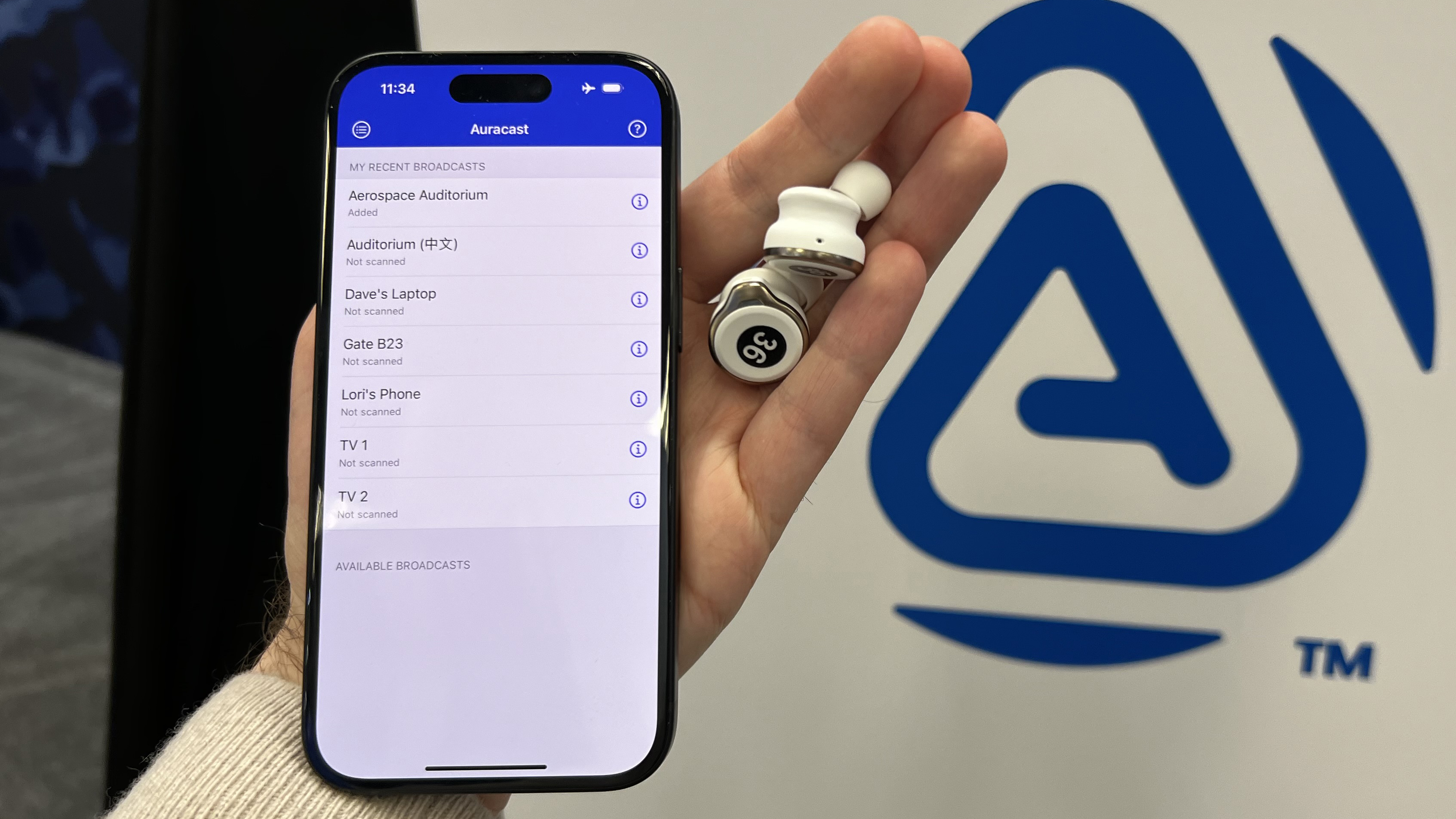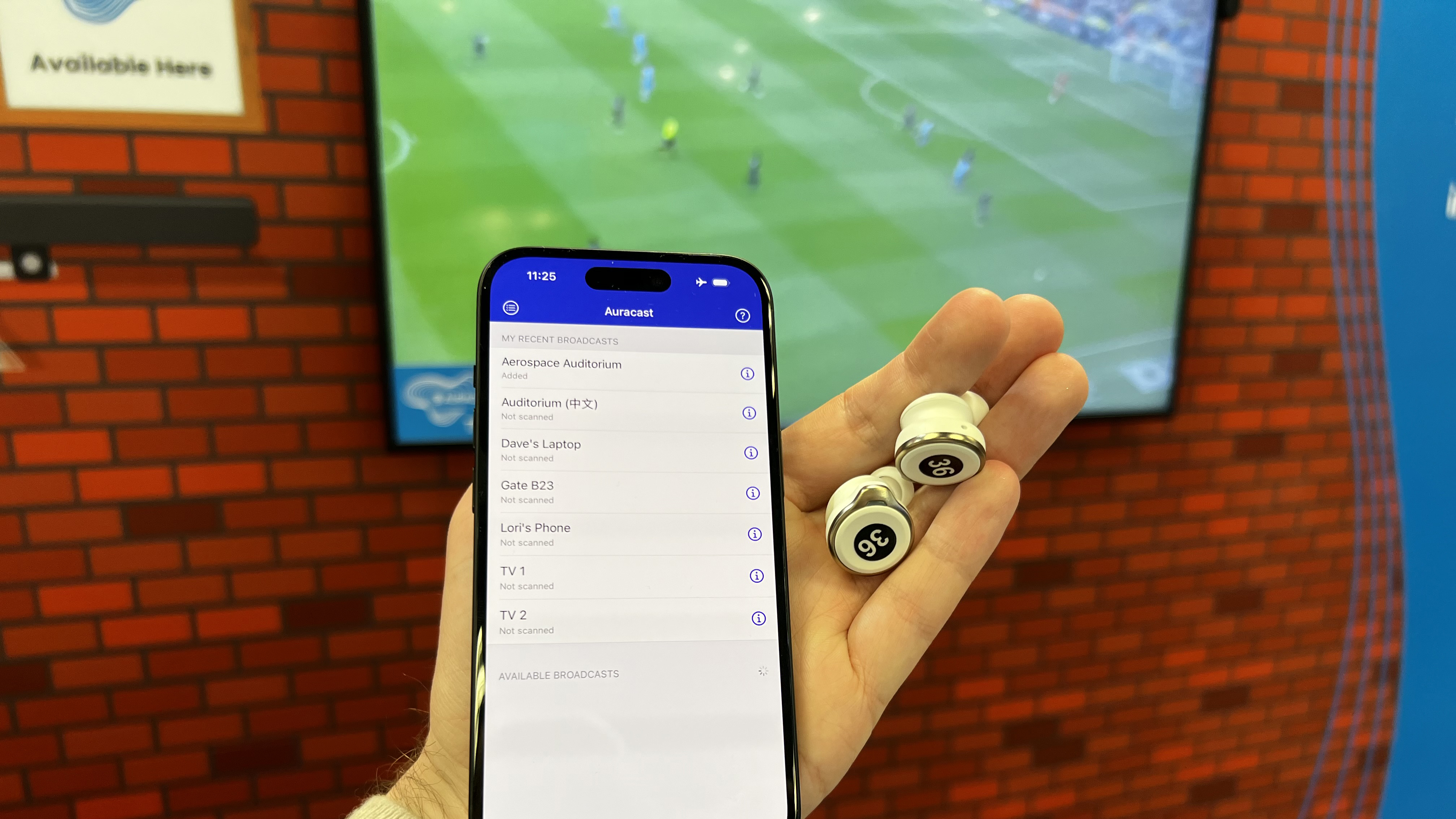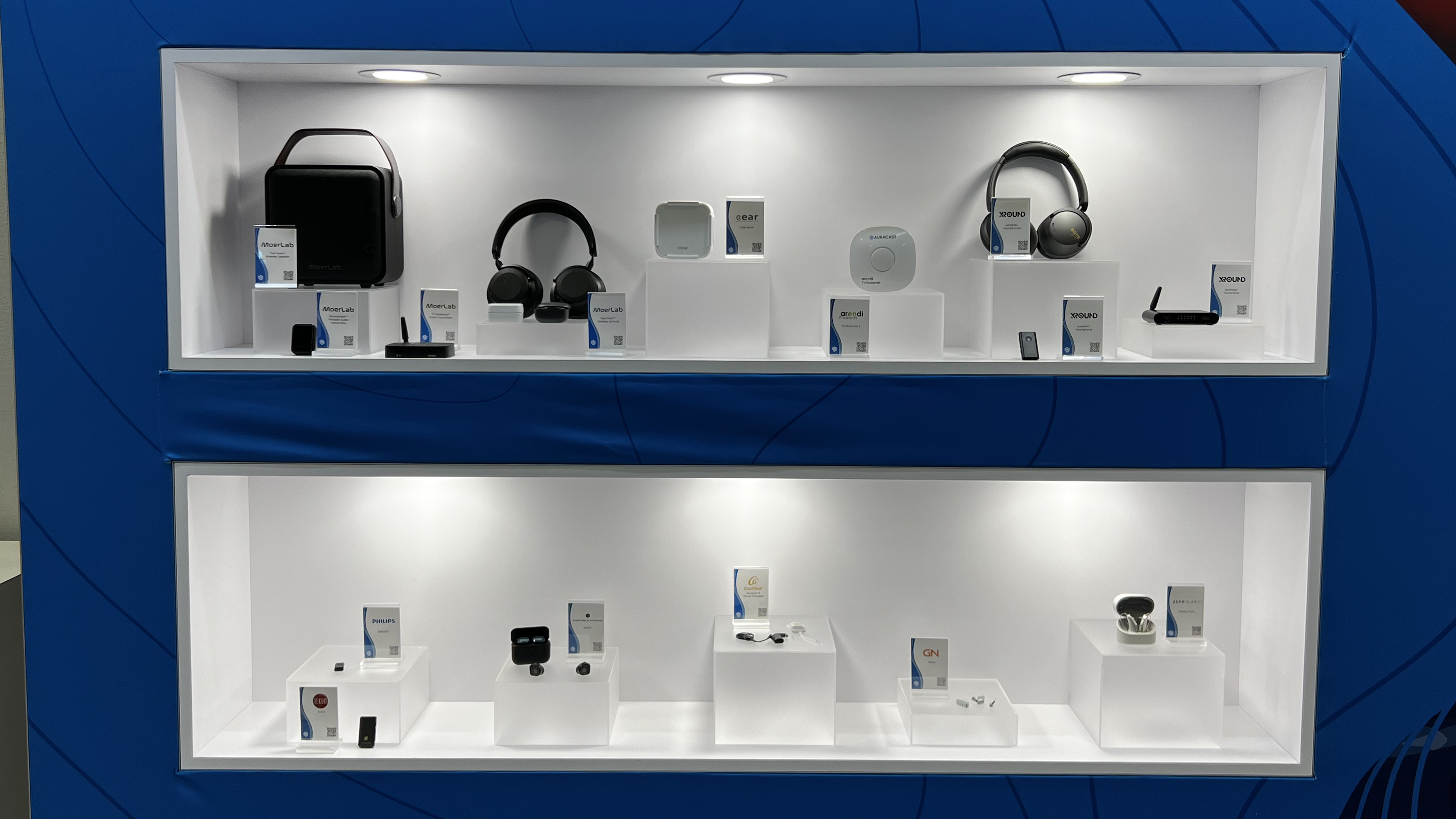I tried Bluetooth Auracast, and it'll change our relationship with headphones
Our listening gear will soon be a way to interact with the world

We've been excited about the possibilities of Bluetooth Auracast ever since it was announced, and at CES 2024 I got to try this new way of using audio in real life, for the first time.
Bluetooth Auracast is a new way of using Bluetooth's wireless audio tech so that the best wireless headphones aren't limited to just the devices you pair them with – they'll be able to connect to public broadcasts easily too. We dig into more details in our 'Bluetooth Auracast explained' guide, but it means that people with Bluetooth hearing aids can get PA announcements beamed straight to their ears, or if you're in a bar with a TV showing sport you could listen to the sound from that match, or you might just share your music from your phone with your friends.
Bluetooth Auracast transmission devices have no limit to how many sets of headphones they can transmit to and can have a range of up to 100m, depending on the transmission device.
It's been a few years since it was announced, and it actually works on existing versions of Bluetooth, but it needed more devices to support the underlying tech before there was any point in launching it. Now that Bluetooth 5.2 is standard on basically every new pair of earbuds, we're getting to the point where we're the Bluetooth consortium is ready to start showing it off.
So at CES, I visited a room with multiple different examples of how people might use Bluetooth Auracast in their day-to-day to try it out, and now I really can't wait for it to take off.

The first thing I was curious about is how you would interact with it. You need the ability to choose which Auracast transmissions to connect to, and you obviously can't do that on your actual headphones. So Auracast was always going to have to use your phone, laptop or tablet as an intermediary, and sure enough when I arrived I was handed an iPhone 15 with an Auracast app on it – though there were also Samsung Galaxy S23 phones in use – and a pair of earbuds that were paired with it.
The Auracast app was very simple: it showed a list of transmissions being detected by the phone, all of which related to the different examples I was about to be shown.
Get daily insight, inspiration and deals in your inbox
Sign up for breaking news, reviews, opinion, top tech deals, and more.
First, I was directed to a demo of an example I mentioned above: a bar with TVs showing sports. On the wall were two TVs that were labelled, and in the Auracast app I could see matching names for those labels. I tapped one and immediately I could hear the commentary for the football match I was looking at. No pause, no pairing process, no wheel saying 'connecting' (at least, not for more than half a second). I had the sound in perfectly good quality. I tapped the name of the other TV and it switched just as quickly to let me hear some talking heads discussing a game. I tapped the name again to stop it playing.
Next, we moved to a faux airport section, with a sign for a particular departure gate. I tapped in the Auracast app for the gate name, and now I could hear any announcements for the gate right in my earbuds, with no chance of missing the last call.
I'm told that in the future Auracast should offer you the ability to listen to two streams at once, too – so at the airport, you could use it to watch the TV showing the news while you wait, but when the gate call is made, you'll still hear it. And remember, this wouldn't be for all gates – you wouldn't just have to be connected to the whole annoying PA (though that could be an option). You could choose to only hear the calls for your gate, available to you even if you go to the bathroom.
I asked if it would be possible to listen to an Auracast transmission and something from your phone outside of the Auracast (ie, watch something on Netflix while you wait, but still hear the gate call), but this is less certain to happen for reasons I'll come back to shortly.
Next, I was shown how Auracast means someone with a Windows laptop or iPhone could share their audio for your earbuds, protected by a password to stop random listeners joining, just like a personal hotspot, basically. For devices that don't have the right hardware to support Auracast, there's a USB-C dongle you can simply attach, too.
Finally, I saw how it can used for public speaking. If it's connected to a microphone properly, Auracast will broadcast simultaneously with no lag, which may be much easier for people with hearing aids to make out than an echoey hall (with people whispering to each other) or an imperfect speaker setup.
The accessibility side of things is a huge part of why Auracast is valuable, but I found myself thinking about how often I'd like to be able to just use this instead of open sounds. I was at more than one CES announcement where the sound systems weren't set up very well, and I'd have quite happily popped in some of the best earbuds to listen to a cleaner sound devoid of extraneous noise.
And then I thought about the potential for multiple people in an office to easily join a video call happening on a single-person's laptop, or the ability for tour guides in a city to just speak into their phone and for it to be broadcast to everyone's earbuds, or how two people could watch a TV quietly together in a bedroom without having to worry about pairing with it…
What this demo showed me is that if Auracast becomes widely available, then I think having a pair of the best wireless earbuds on you becomes something you might consider essential, because rather than being something that splits you off from the world around you, they can actively connect you to it. They can become an easily shared experience rather than a solo one. They could become a utility you want around all the time just in case, like your smartphone. Who knows what new ways people will think of to use this tech, from entertainment to safety to business.

But we'll need widespread support for that – and for them to really reach their potential, we'll need support built directly into the phone operating systems, not through an app. This is the thing that might make it possible for you to listen to an Auracast broadcast and your Netflix audio at the same time; without it, it'll always be a more awkward experience.
We'll also need the products to confirm support for it – some have been announced already, and more will be updated. At CES, JBL announced new audio tech with Auracast in, and it'll also be supported by Sennheiser's new Momentum 4 True Wireless earbuds – Samsung is also updating the excellent Galaxy Buds 2 Pro with it.
More will come, especially because chip makers are on board, including Intel, Qualcomm and RealTek, which covers a lot of what's out there. Here's hoping more big names come on board quickly, and Google and Apple follow with support built slickly into Android and iOS.
We’re covering all of the latest CES news from the show as it happens. Stick with us for the big stories on everything from 8K TVs and foldable displays to new phones, laptops, smart home gadgets, and the latest in AI.
And don’t forget to follow us on TikTok for the latest from the CES show floor!
You might also like

Matt is TechRadar's Managing Editor for Entertainment, meaning he's in charge of persuading our team of writers and reviewers to watch the latest TV shows and movies on gorgeous TVs and listen to fantastic speakers and headphones. It's a tough task, as you can imagine. Matt has over a decade of experience in tech publishing, and previously ran the TV & audio coverage for our colleagues at T3.com, and before that he edited T3 magazine. During his career, he's also contributed to places as varied as Creative Bloq, PC Gamer, PetsRadar, MacLife, and Edge. TV and movie nerdism is his speciality, and he goes to the cinema three times a week. He's always happy to explain the virtues of Dolby Vision over a drink, but he might need to use props, like he's explaining the offside rule.